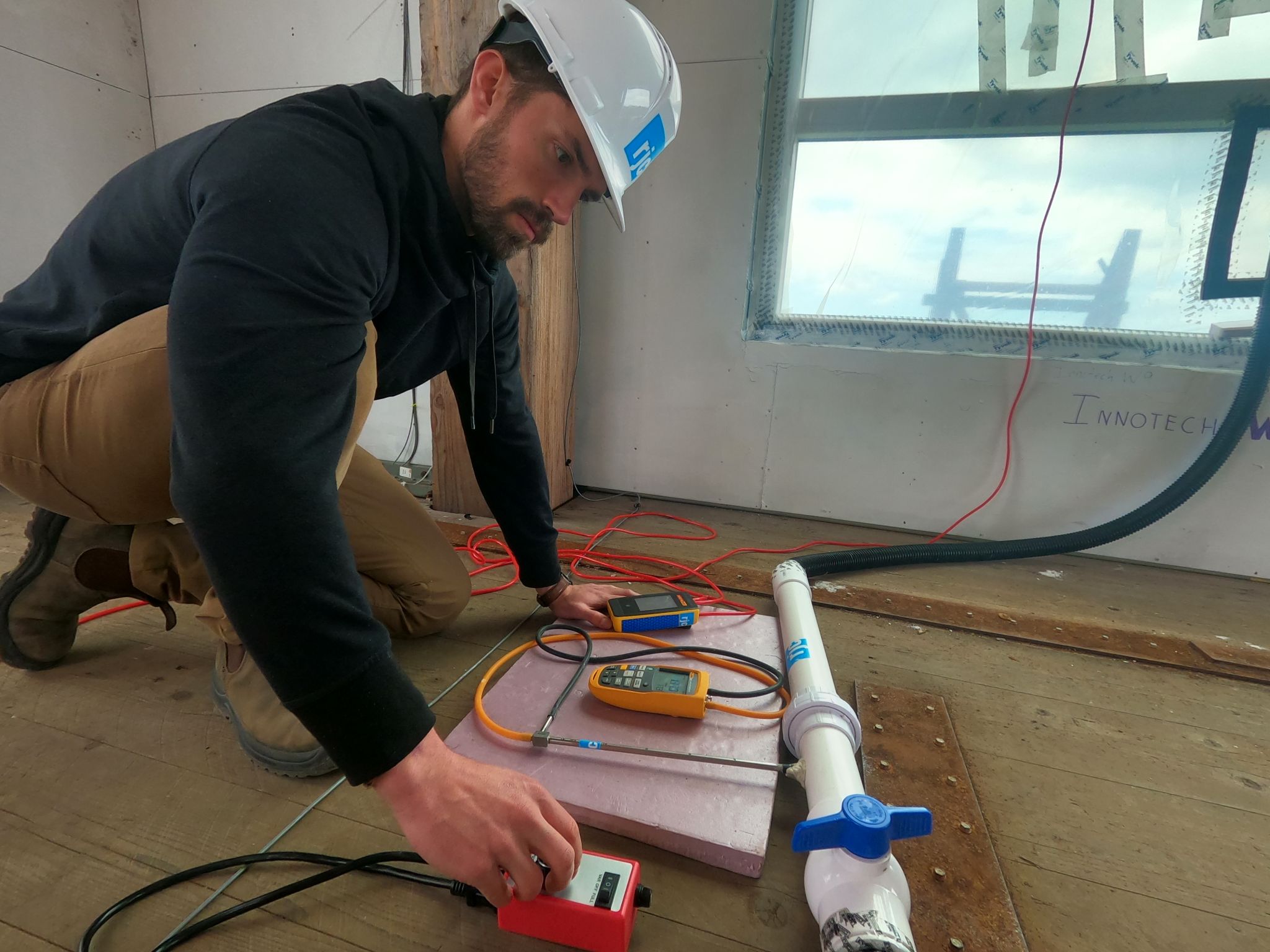Vancouver engineers join historic earthquake testing
The project simulated earthquakes on a 10-story mass timber building.

Key Takeaways:
- The project simulated large earthquakes on a 10-story mass timber building, the tallest ever tested on a shake table.
- RJC’s role was testing the energy performance of the building envelope before and after an earthquake.
- The firm said this information is critical for B.C. where a building energy performance requirements are getting higher.
The Whole Story:
What happens to a mass timber building’s energy performance when it is hit by an earthquake?
RJC Engineers, a Canadian-based building structure and enclosure engineering firm, aims to find out.
The firm was recently in San Diego participating in the historic Natural Hazards Engineering Research Infrastructure (NHERI) TallWood research project. The project is a National Science Foundation-funded research effort that aims to investigate mass timber buildings’ earthquake resilience by simulating large earthquakes on a 10-story mass timber building, the tallest ever tested on a shake table.
Terry Bergen, managing principal at RCJ, explained that part of the firm’s team bumped into the test’s organizer’s and asked if they could participate.
The tests will provide information on how a compromised building envelope leads to decreased energy efficiency, and what can be done in the future to mitigate a loss of energy through new design decisions.
“Being a structural engineering firm, everybody was more than happy to have us but testing the envelope wasn’t initially part of the program,” said Bergen. “They were just kind enough to let us exercise our curiosity as well.”

The building includes 3-stories of enclosure systems to assess their interaction with the structure to develop and validate seismic design methodology, while also researching the impact on building enclosure. This first-of-its-kind initiative is expected to transform sustainable building design, and reduce the carbon impact of the construction industry in Canada.
RJC’s team is studying the impact of the earthquake testing, ranging in magnitude from 4 to 8, on the integrity of windows, a critical component to the overall energy efficiency and safety of a building.
“We want to learn how well the envelope will work afterwards and how it will affect performance,” said Bergen.” The energy performance might not decline, and things may or may not be visible. We want to determine if there is a degradation of performance and if we can see it insitu. If they don’t perform well post-event, we would really like to know.”
The firm noted that the Insights gleaned from the testing are particularly crucial in B.C., where new code changes require developers to commit to greenhouse gas intensity targets, with Canada as a whole currently targeting harmonized implementation by the 2030 code cycle. Following a seismic event, even if unbroken, windows can sustain damage causing air to escape through the seals, leading to unseen breaches that are expensive to repair. If state-of-the-art building energy performance schemes stop working as a result, this could drive up carbon emissions through fuel consumption and require repairs.
“When we consider that our carbon-reduced future will require high-performance buildings, none of those envelope systems used to manage our interior climate will work without enhanced air tightness and moisture control,” said Bergen. “If that fails, it isn’t optimized and operational carbon loads go up and it defeats the purpose of energy efficiency codes.”
Bergen said the team has returned from the tests and is currently working on writing up the results.

